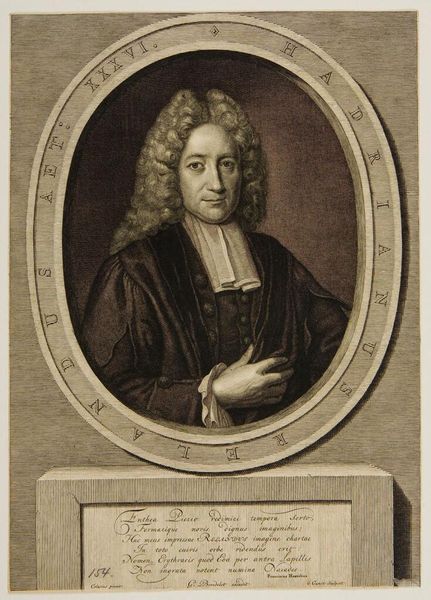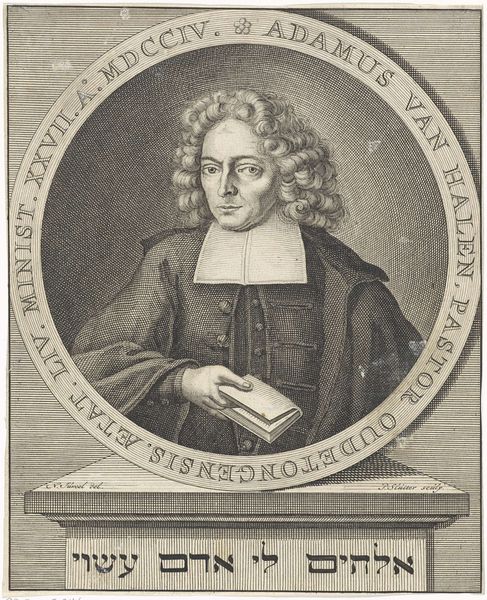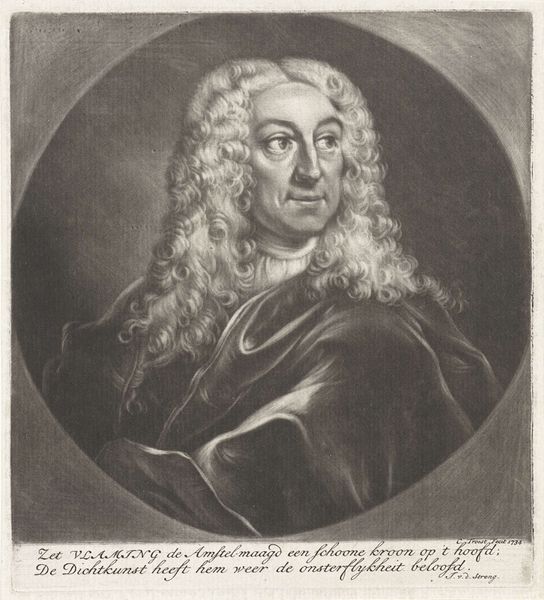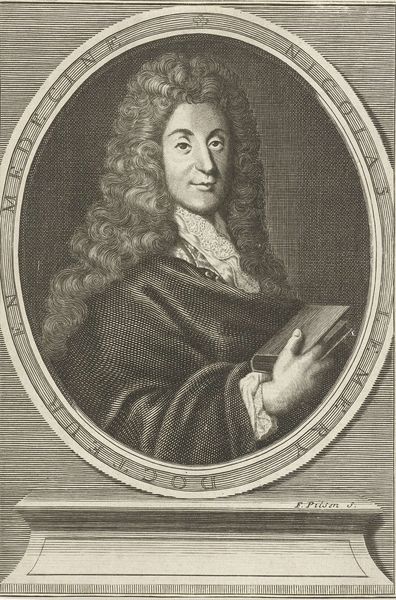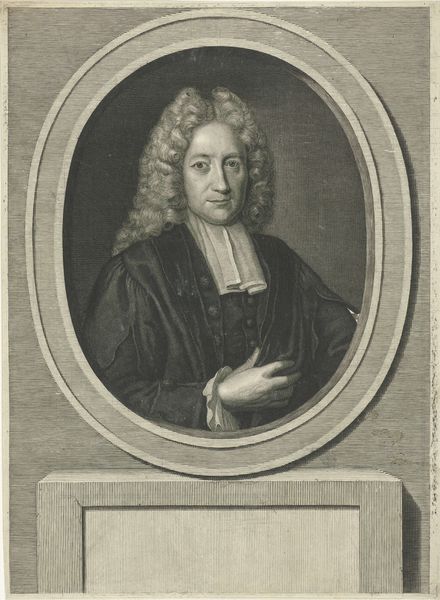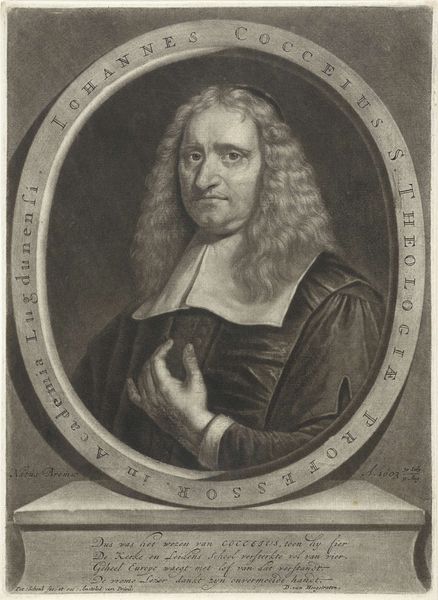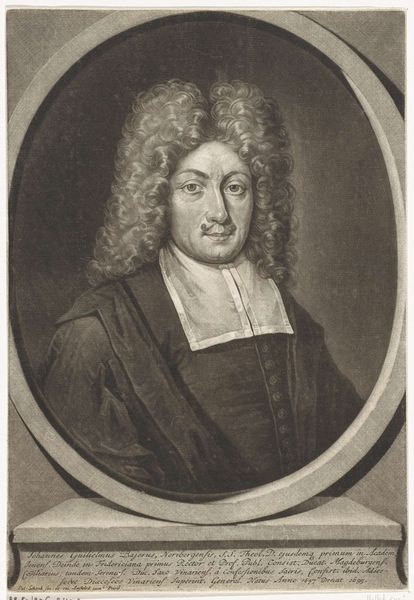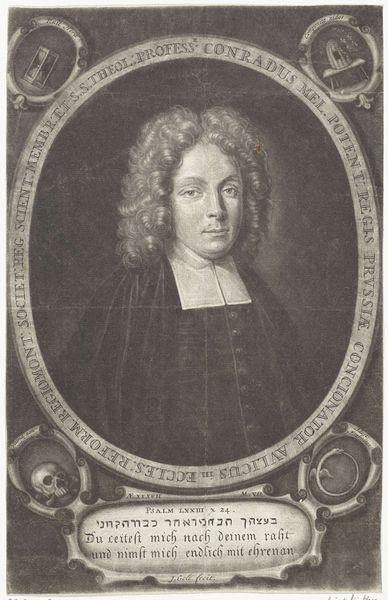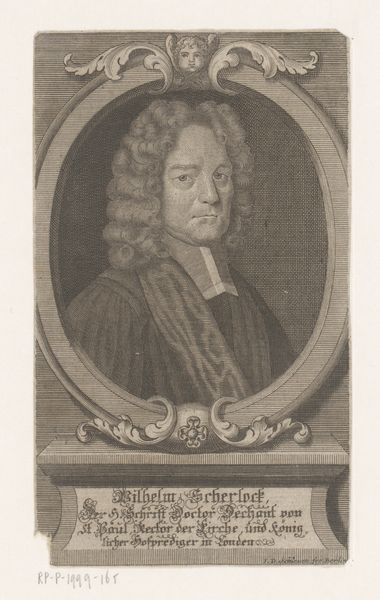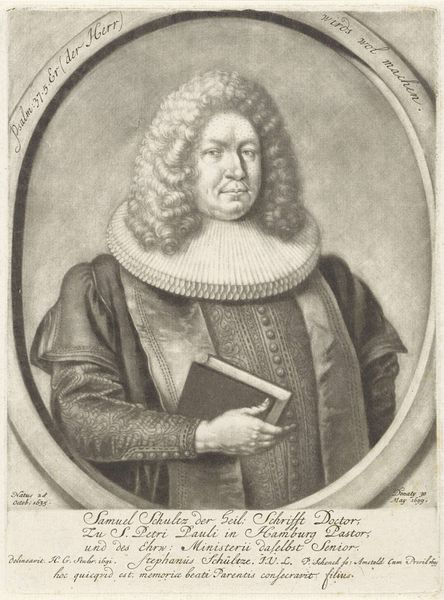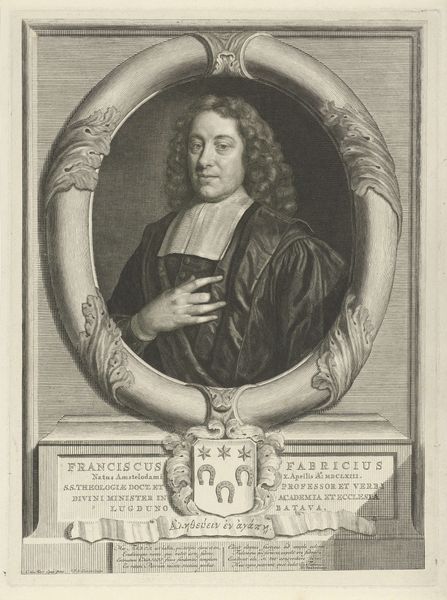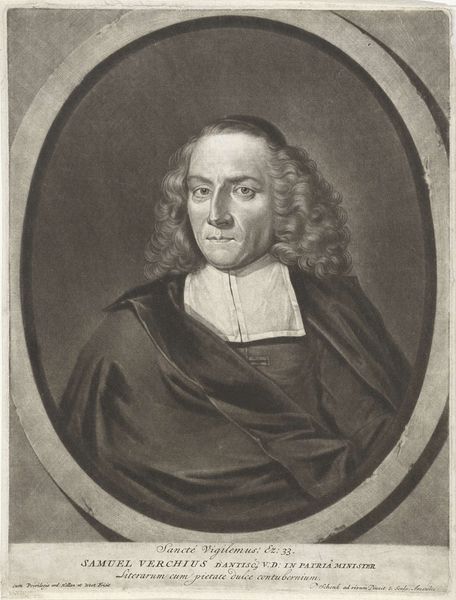
drawing, charcoal
#
portrait
#
drawing
#
baroque
#
charcoal drawing
#
portrait drawing
#
charcoal
#
academic-art
Dimensions: height 243 mm, width 174 mm
Copyright: Rijks Museum: Open Domain
Curator: Looking at this portrait, I am struck by the somber and reflective mood emanating from it. Editor: Yes, Johannes de Groot’s portrait drawing from the early 18th century of Joan van den Honert is indeed a very intriguing image, currently housed in the Rijksmuseum collection. De Groot captured van den Honert in charcoal with meticulous detail. Curator: The artist’s use of charcoal to achieve such nuanced shading and texture, especially in the hair and fabric, is remarkable, wouldn’t you agree? It begs the question of why charcoal was specifically selected, versus, say, a pen and ink, for this portrait. Its accessibility, affordability? Editor: Precisely, charcoal offers a softness and depth that aligns well with Baroque portraiture’s intent to convey character and status. More broadly, consider who commissioned such works—elites eager to solidify their positions through artistic patronage and strategic display of power. Curator: It speaks volumes about artistic and societal hierarchies—portraiture became a visual marker for entry into a specific class. Editor: And how these depictions often played out within the domestic settings of wealthy Dutch homes. A piece like this served to project both public authority and familial pride. How art was integrated into one’s private spaces also informed social relationships of that time. Curator: Furthermore, the act of making a charcoal drawing would be less labour intensive or financially taxing. This could offer a path of access to portraiture, bypassing oils and painted portraits. It would open artistic practice up. Editor: Yes. Also notice the oval frame. A symbol reinforcing convention but simultaneously, subtly influencing how viewers engage with and legitimize such imagery. These frames weren’t just aesthetic choices; they were integral components to conveying significance and legacy. Curator: This glimpse into the life and context of both the artist and sitter provides invaluable context for understanding this work, doesn't it? It illuminates broader power dynamics present at the time. Editor: Indeed, a closer examination shifts our appreciation for how an artist and medium together shaped a society.
Comments
No comments
Be the first to comment and join the conversation on the ultimate creative platform.
